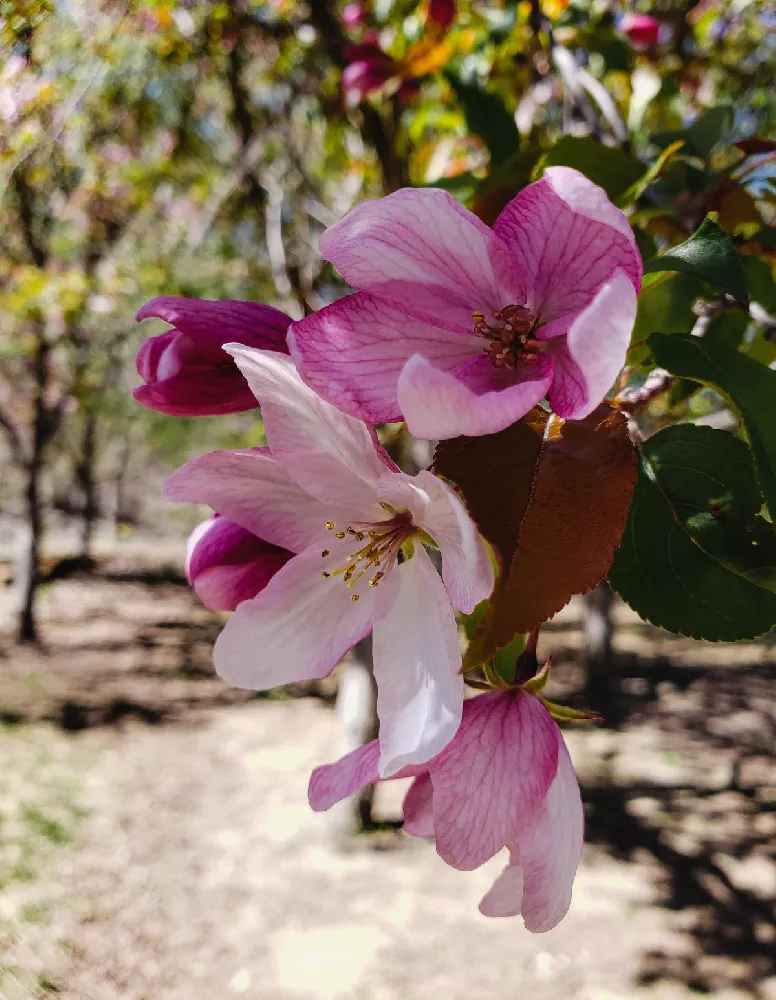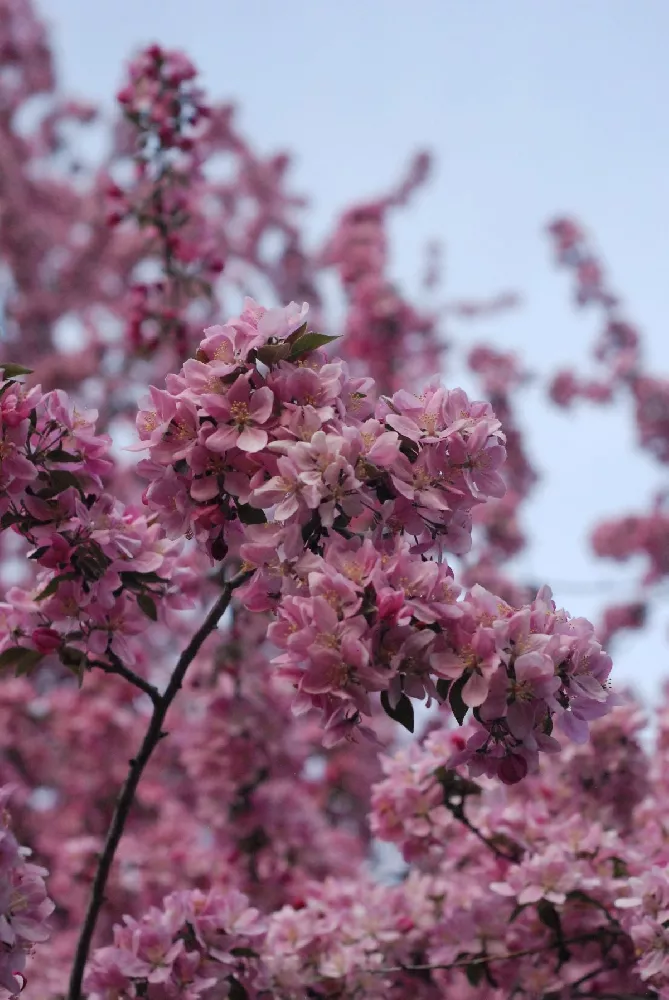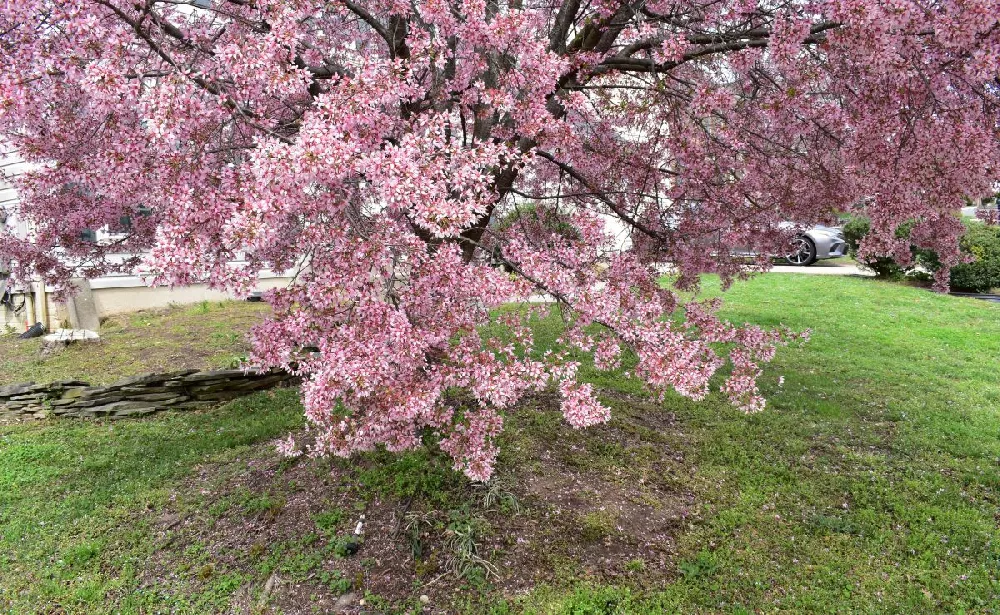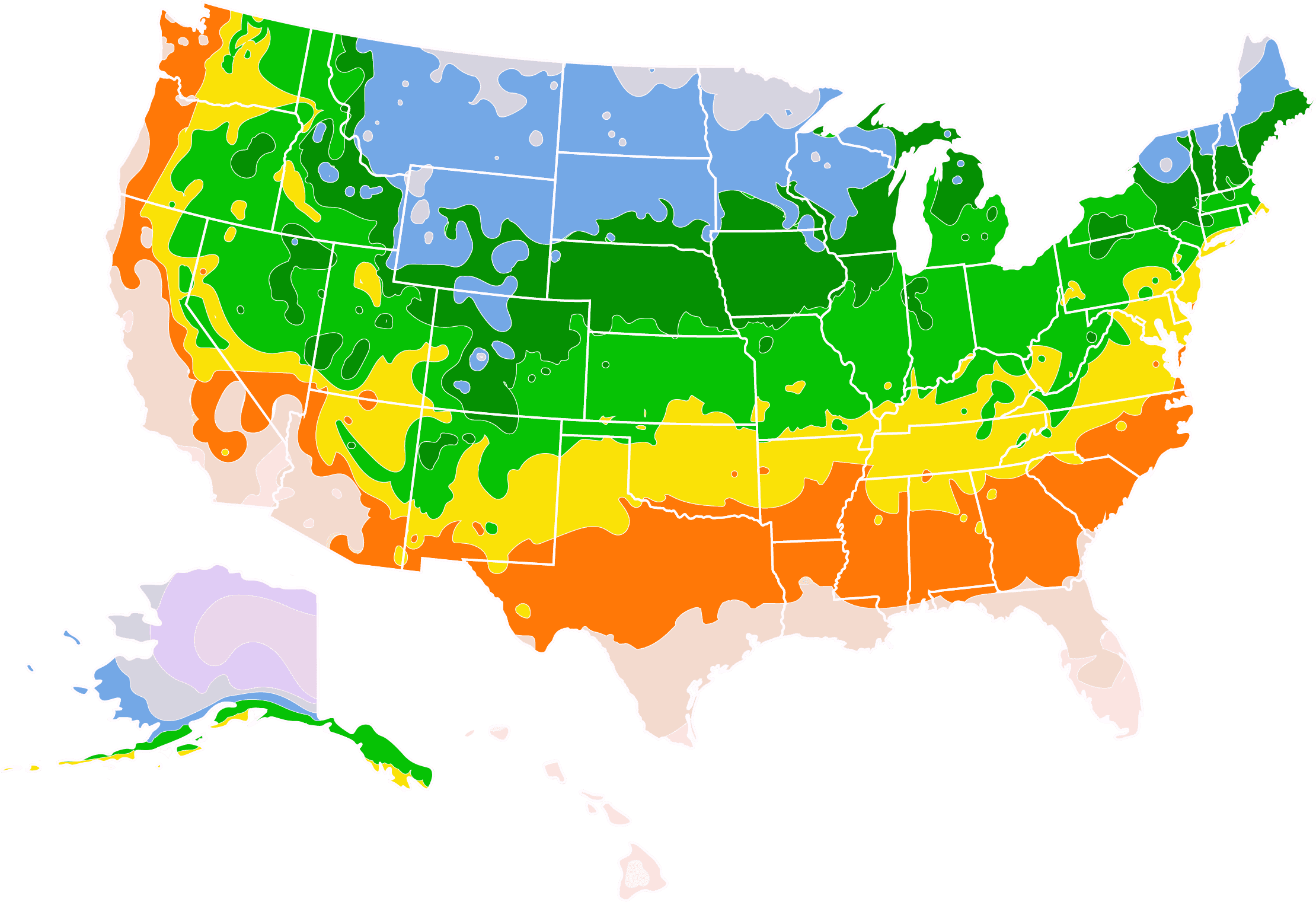Robinson Crabapple Tree for Sale - Buying & Growing Guide
- Ships in 1-2 days
- 1-Year Warranty Eligible
- Pots or accessories are not included unless specified in the product options.
Shipping Details:
Once your order is shipped, you’ll receive an email with a tracking number and estimated delivery date. Most orders ship immediately, but some items are seasonal and may only ship in spring or fall. These products are noted on the website.
If you're interested in a crabapple tree that displays some darker tones throughout the entire growing season, then the Robinson crabapple tree is the right crabapple cultivar for you. Also known as Malus 'Robinson,' this plant begins the season with a set of dark pink blooms. When the foliage arrives, it stands out from the leaves of most other plants with its dark purple hues. In fall, the Robinson crabapple tree continues to impress as dark red fruits dangle from its branches.
- Each spring, this plant shows off countless dark pink blossoms.
- The leaves stand out with a dark purplish tint.
- By fall, the Robinson crabapple tree will hold lovely dark red fruits.
Plant Care
Sunlight

Your Robinson crabapple tree will grow best where it can receive full sunlight but will likely tolerate partial shade.
Watering
When mature, water this tree about once per week during the hottest months of the year.
Fertilizing

Feed in early spring with a balanced fertilizer or one that is higher in nitrogen.
Planting and Care
Planting instructions
The Robinson crabapple tree survives in USDA hardiness zones 4-8 and can adapt to either partial shade or full sunlight, with the latter being preferable. Like most crabapples, this tree can adapt to a wide range of soil types but will show the best growth when planted in soils that are loamy, with good drainage and a moderate amount of acidity. Upon removing your new plant from its container, loosen the roots to encourage them to spread once planted. Then dig a hole that is as deep as the root ball is tall and twice as wide.
Watering and nutrients
During the summer, you should supply your Robinson crabapple tree with about 1 inch of water each week to help it combat the heat. During the spring and fall, your plant won’t need much water at all, as long as it is well-established. By contrast, newly planted trees should receive water often enough to maintain consistent soil moisture. Feed this plant once per year in spring. Use a fertilizer that has a balanced ratio of nutrients. Alternatively, you can use a nitrogen-rich fertilizer if you notice that your plant is not putting forth much new growth.
Pollination
The Robinson crabapple tree is a self-pollinating species. As such, you need only one plant to produce crabapples. In spring, this tree will use its many flowers to attract honey bees and other pollinator insects. While feeding on nectar, those insects will transfer pollen from flower to flower to conduct pollination. Most people don’t grow this plant for harvest purposes, but if you are among the few who do, you should plant more than one Robinson crabapple tree as this can drastically increase fruit production.
Pruning
The best time to prune a Robinson crabapple tree is during the late winter or early spring, when this plant is just returning to its active growth phase. When pruning, always use pruning tools that are as sharp and clean as can be to reduce the risk of disease spread. Pruning for a Robinson crabapple tree should include general shaping and thinning of the canopy. You can also remove any branch that is broken, damaged or showing signs of disease.
Pests, diseases and animals
There are a few diseases that are common among crabapple trees. Some of those diseases include apple scab, cedar apple rust and leaf spots. However, the good news is that the Robinson crabapple tree has better resistance to disease than most other crabapple varieties. Pests can be an occasional issue for this tree, including Japanese beetles, scale insects, borers and aphids. However, the Robinson crabapple tree often has decent resistance to pest infestations as well.
Harvesting
In most cases, gardeners grow the Robinson crabapple tree strictly for its ornamental features. Despite that, the crabapples that this plant produces are technically edible. In their raw form, crabapples tend to have a tart or sour taste that is not all that pleasing to most people’s palates. However, it is possible to incorporate crabapples into jams to make them a bit more appetizing. If you grow a Robinson crabapple tree, there is no reason that you can’t try harvesting and cooking with your crabapples.
Achieving maximum results
The Robinson crabapple tree is adaptable to full sunlight or partial shade. However, more sunlight generally leads to better performance for this tree, including more flowers and more vibrant colors overall. However, if you cannot provide full sunlight, you must be able to give your Robinson crabapple tree at least 4 hours of light per day if you want it to survive. Along with being adaptable to sunlight and resistant to most pests and diseases, the Robinson crabapple tree is also an excellent option for growing areas that have some urban pollution.
FAQs
How much space does a Robinson crabapple tree need?
At maturity, a Robinson crabapple tree will reach about 20 feet tall and have about a 20-foot spread. Based on those dimensions, you should give your tree about 15-20 feet of space in all directions when you plant it. That spacing will ensure that your Robinson crabapple tree can develop its full form without overcrowding any other plants in your yard.
Does the Robinson crabapple tree have fall color?
The color display of a Robinson crabapple tree lasts for the entire growing season and continues through the fall. During summer, this plant's leaves will be dark green with purplish hues. As fall approaches, the leaves can turn orange at times. However, this color is not always reliable, and the leaves of your Robinson crabapple may fall without showing an impressive shade before doing so.
How can you use a Robinson crabapple tree in the garden?
The Robinson crabapple tree has an immense ornamental value that includes vibrant flowers, interesting foliage and a pleasing growth habit. Those traits make this plant the ideal specimen for nearly any garden. However, while it is easy for this plant to steal the show and catch the eye of any garden visitor, it can also act as an accent plant. From a more functional perspective, your Robinson crabapple tree may grow tall enough to provide some shade as well.
You can't add more Product Name - Product size to the cart.
OK



